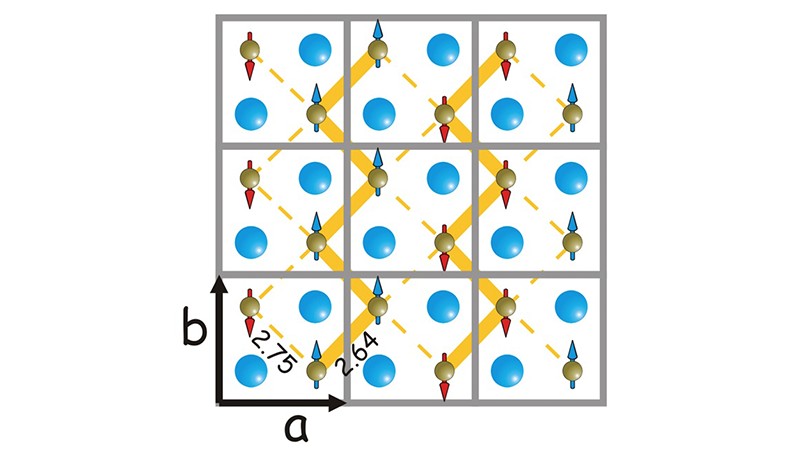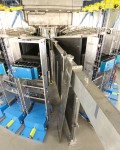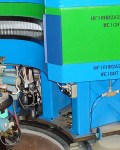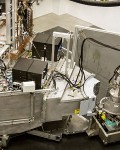Neutron diffraction studies of Fe1+yTe with y=0.09 have detected subtle structural distortions associated with the presence of a bond-order wave (BOW), a novel charge density modulation that influences electronic orbital states and their interactions.The complex relationship between, magnetism, structural distortion, and superconductivity is a key issue in Fe-based superconductors. Detection of a BOW transition, distinct from the structural and magnetic transitions, suggests that electronic orbital occupancies play pivotal role in determining the electronic properties.
Elastic neutron scattering measurements using SNS’s HYSPEC reveal the presence of symmetry-forbidden (1,0,0) reflections below 60 K. Modeling this data reveals the existence of a BOW. The magnetic, structural, and BOW transitions were explored using HFIR’s HB-2A, SNS’s POWGEN, and NIST’s SPINS. Key electronic properties of electrical resistivity, magnetic susceptibility and magnetic order dramatically change in the BOW state.
Work performed at the Oak Ridge National Laboratory Spallation Neutron Source and High Flux Isotope Reactor was supported by Scientific User Facilities Division, Office of Basic Energy Sciences, US Department of Energy.
D. Fobes, I. A. Zaliznyak, Z. Xu, R. Zhong, G. Gu, J. M. Tranquada, L. Harriger, D. Singh, V. O. Garlea, M. Lumsden, B. Winn, "Ferro-Orbital Ordering Transition in Iron Telluride Fe1+yTe", Physical Review Letters 112 (2014): 187202. http://dx.doi.org/10.1103/PhysRevLett.112.187202












